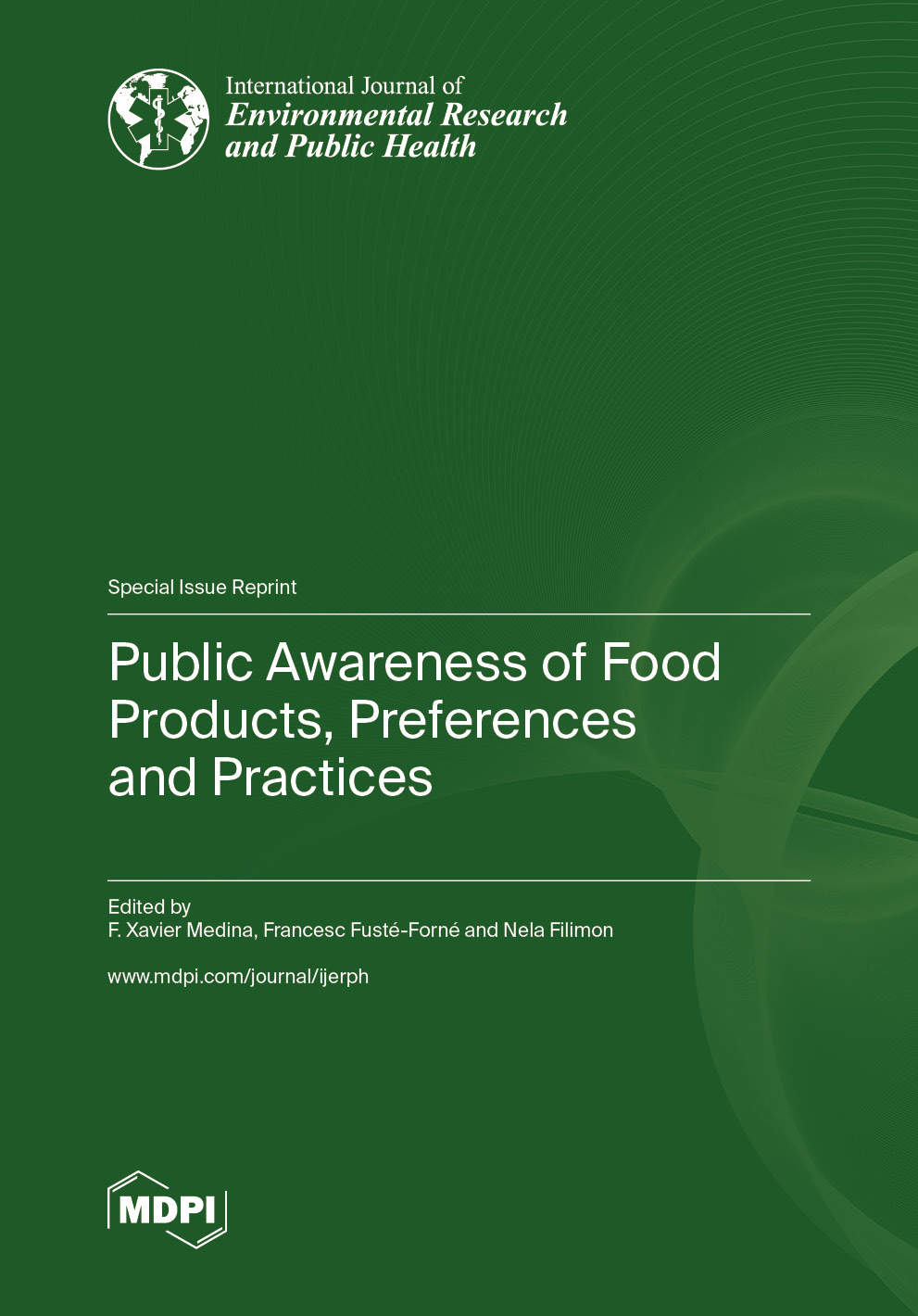Public Awareness of Food Products, Preferences and Practices
A special issue of International Journal of Environmental Research and Public Health (ISSN 1660-4601). This special issue belongs to the section "Global Health".
Deadline for manuscript submissions: closed (15 March 2023) | Viewed by 46134
Special Issue Editors
Interests: anthropology of food; food studies; food sustainability; mediterranean cultures; mediterranean diet
Special Issues, Collections and Topics in MDPI journals
Interests: food; gastronomy; heritage; marketing; media; tourism
Special Issues, Collections and Topics in MDPI journals
Interests: consumer behavior; cultural marketing; social media; sociology of consumption
Special Issues, Collections and Topics in MDPI journals
Special Issue Information
Dear colleagues,
Food is not only a source of nutrition for humans, but it also refers to physical and human dynamics. The understanding of food products, preferences, and practices provides knowledge about historical and contemporary uses. In addition, foods and drinks are both identity and attraction factors of regions around the world. In this sense, there is a great variety of actors, cultures, and practices that food value chains include. This Special Issue on the ‘Public Awareness of Food Products, Preferences and Practices’ aims to discuss the protection and promotion of ‘food’, from a broad perspective, through private and public campaigns, food-based experiences, (social) media platforms, food cultures, healthy and sustainable food practices. The Special Issue welcomes submissions that deal with the development of food awareness in relation to both daily and leisure activities, where travel and cultural differences can also enhance food as tangible and intangible heritage of a territory. The objective of this Special Issue is to publish original and innovative research papers and case studies, from both qualitative and quantitative methodological approaches.
Best regards,
Prof. Dr. F. Xavier Medina
Dr. Francesc Fusté-Forné
Dr. Nela Filimon
Guest Editors
Manuscript Submission Information
Manuscripts should be submitted online at www.mdpi.com by registering and logging in to this website. Once you are registered, click here to go to the submission form. Manuscripts can be submitted until the deadline. All submissions that pass pre-check are peer-reviewed. Accepted papers will be published continuously in the journal (as soon as accepted) and will be listed together on the special issue website. Research articles, review articles as well as short communications are invited. For planned papers, a title and short abstract (about 100 words) can be sent to the Editorial Office for announcement on this website.
Submitted manuscripts should not have been published previously, nor be under consideration for publication elsewhere (except conference proceedings papers). All manuscripts are thoroughly refereed through a single-blind peer-review process. A guide for authors and other relevant information for submission of manuscripts is available on the Instructions for Authors page. International Journal of Environmental Research and Public Health is an international peer-reviewed open access monthly journal published by MDPI.
Please visit the Instructions for Authors page before submitting a manuscript. The Article Processing Charge (APC) for publication in this open access journal is 2500 CHF (Swiss Francs). Submitted papers should be well formatted and use good English. Authors may use MDPI's English editing service prior to publication or during author revisions.








